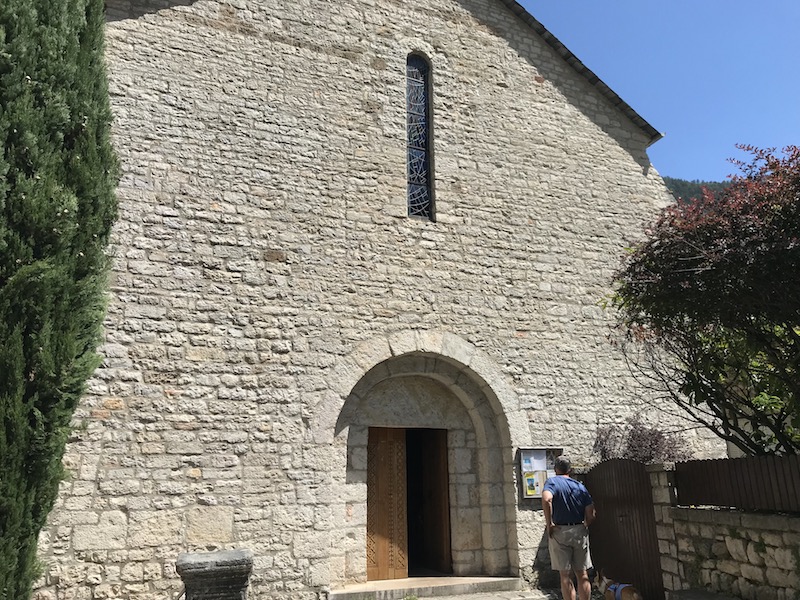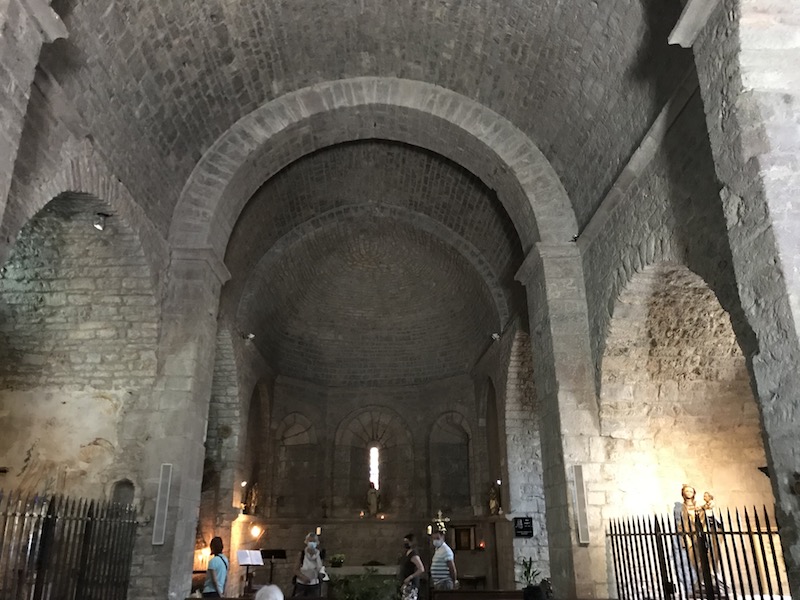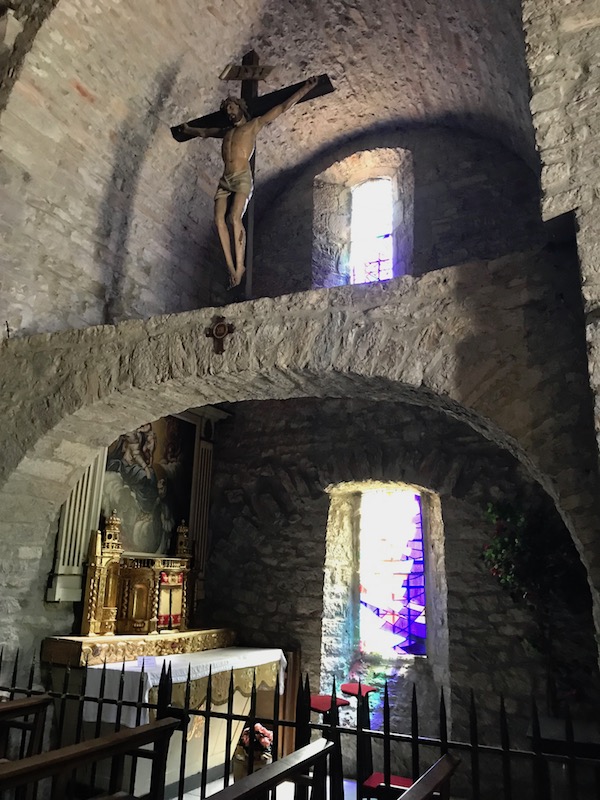Our Blog - Sainte-Enimie, France
Sainte-Enimie is another of the Plus Beaux Villages in France and was somewhat "on the way" to Grenoble. It is a quaint little village but you can tell that it is mostly a little tourist village. We did meet up with a British gentleman that spoke to us for a little bit who has both a Gite that can be rented just outside of town, and a business in town that makes wooden items. He told us a little bit about the village, including how the road that his business was on used to be the main road in town before the department built a new road that basically circles the village. He also mentioned how the village used to be very prone to flooding and how that street had been under water multiple times.
Sainte-Enimie originated from a monastery from the 6th century. The village buildings are built out of local limestone and go up the hill from the river. The name comes from a 13th-century poem about the daughter of the Merovingian king Clothar II, who was named Enimie. When she reached marriageable age, she did not want to marry, preferring to care for lepers instead. According to the poem, she asked God to help her avoid marriage; she was then infected with leprosy. Her father wished for her to be cured and had her taken to be bathed in the waters of Gévaudan, to no avail. An attempt at Bagnols-les-Bains was equally unsuccessful, but a river in Burlats near the Tarn miraculously cured her disease. However, when she returned home to marry her noble suitor, she was once again infected with leprosy and returned to Burlats, where she was cured once more. This process was repeated a third time, after which it was decided that she must remain in that area. She briefly lived in a cave before starting a convent, becoming a nun, and eventually died there.
I'll start with a few pictures of the surrounding area, which have deep gorges that the road weaved around.


The town retains a very medieval character (perhaps because that is what brings the tourists), and here is one fo the small arched gateways into the old town.
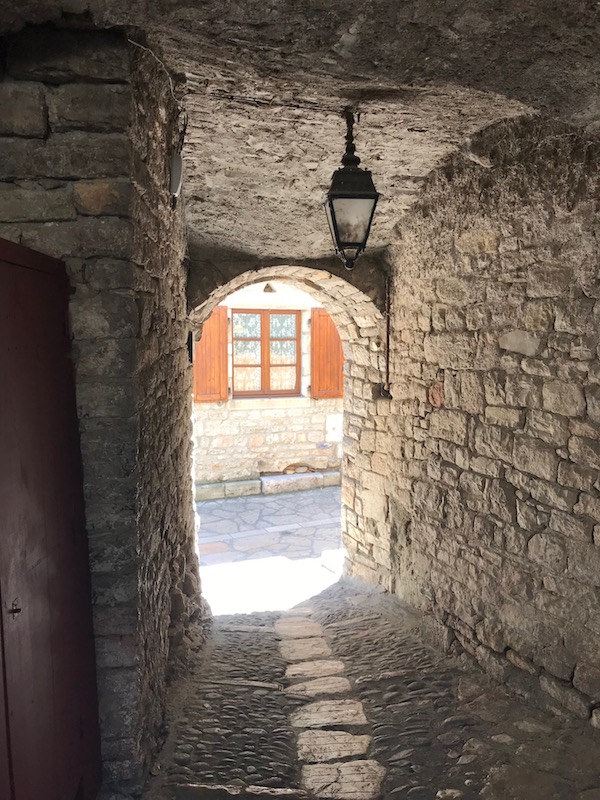
Here, I was attempting to show how the narrow cobble-stone alleys wind up the hill.

Some random pictures of some of the medieval houses, both in the town and on the outskirts on the hills.

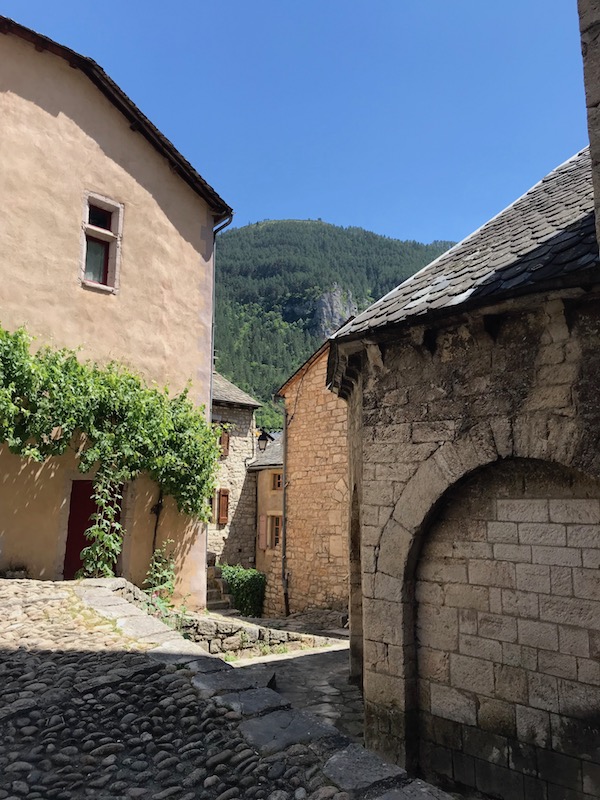
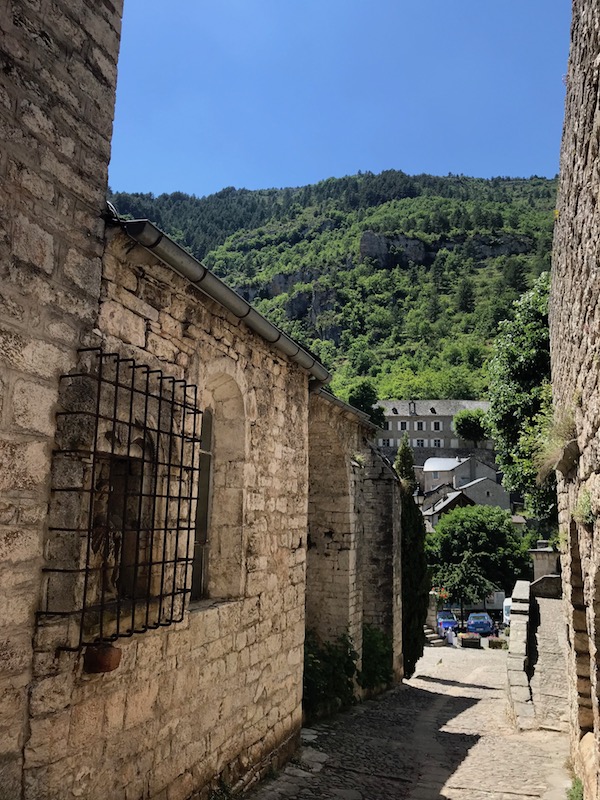
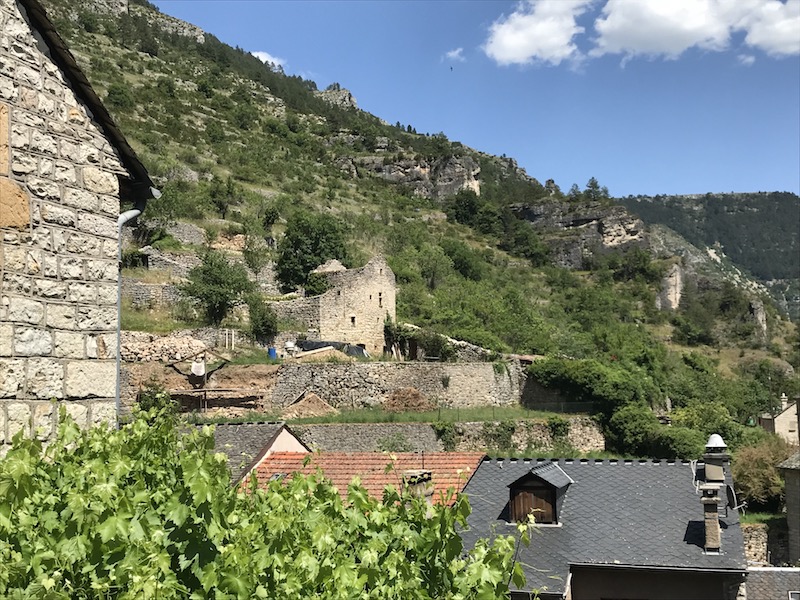
I finally got Lucy to pose and look at the camera, but it seems that getting Tom to look at the camera at the right time was a bit harder ....But again, another arched portal.


In the Middle Ages, the streets and squares were named based on their purpose. For example, the square where this house stands is called "Butter Square" and a market was held here that sold butter made from sheep's milk. The house is very typical of the Middle Ages with a double corbeled construction. This was a way of gaining space on each floor while reducing the land tax, since you were only taxed on the the space that your house took on the ground.

As we were heading out of town, we ran across the Notre Dame du Gourg church. In late Romanesque style, it was built at the end of the 13th century. The exterior of the church, as well as most of the interior decor is quite plain. However, there are various statues of wood and stone of the 12th century and the 15th century, as well as some nice ceramic decorations depicting the life of Énimie.
